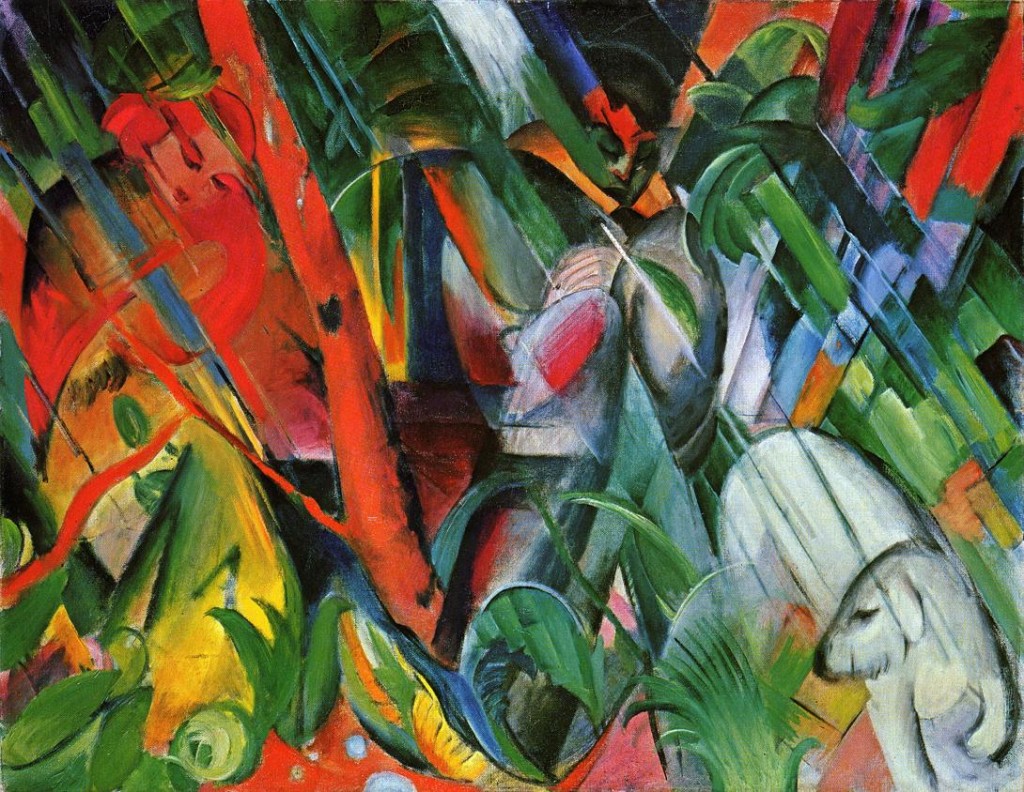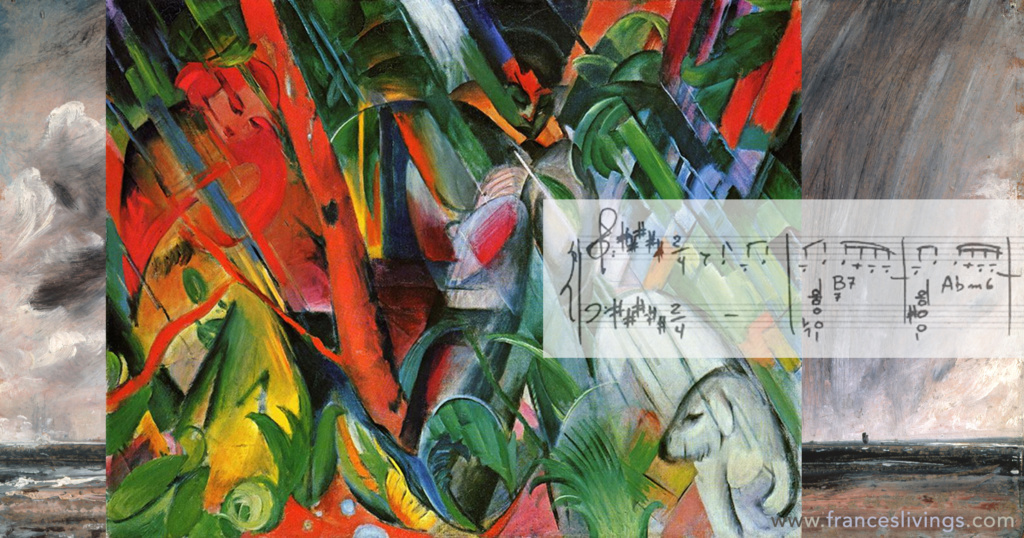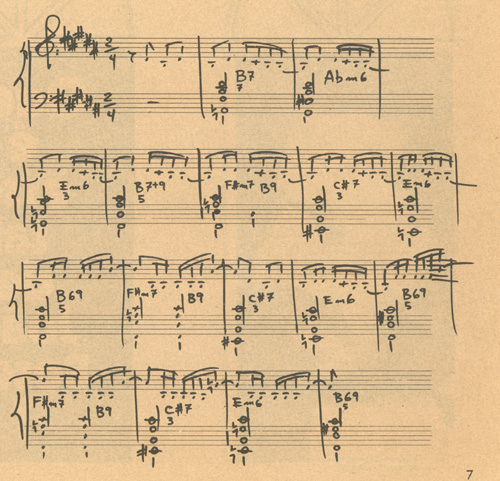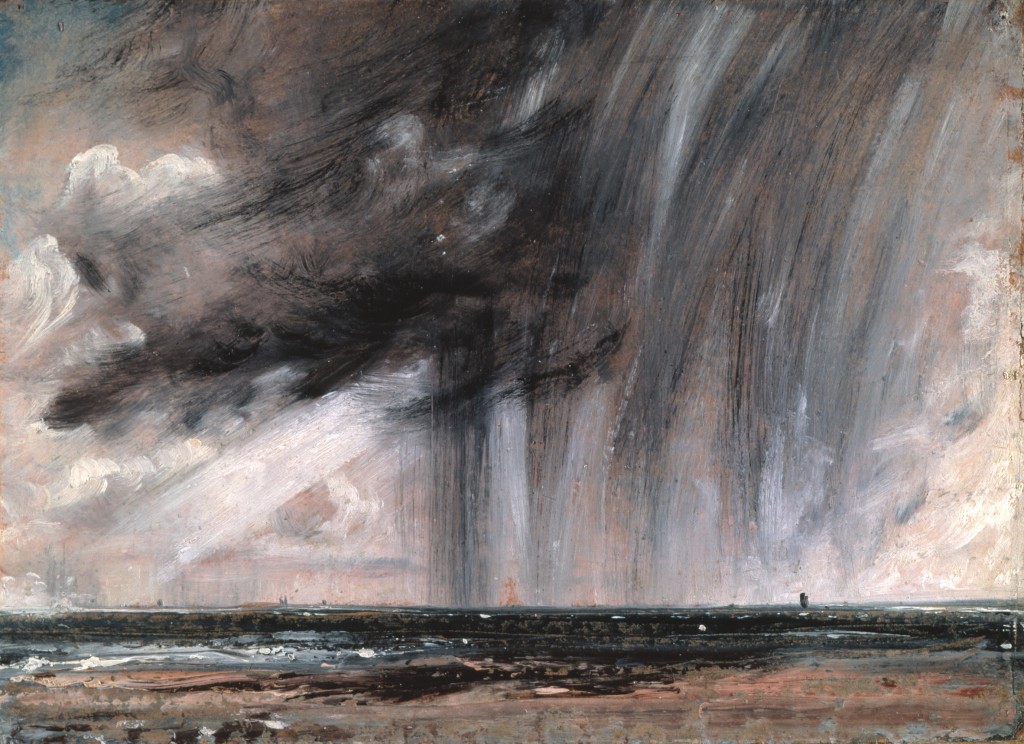
I have always loved French chansons which definitely derives from my strong affinity with the French culture – and I am not only referring to the delicious food. I was thrilled to start learning French at middle school and very excited about being able to count to ten, say bonjour, merci, oui and non after a couple of lessons. My emotional bond with French music however, developed later in junior art college, where I had a very Francophile teacher. He spent (probably) all of his holidays in France and often came to class wearing the typical black beret. So often, instead of bending our heads over books, like the children’s (and adult’s) classic Le Petit Prince by Antoine de Saint-Exupéry we were supposed to be reading at the time, he would bring his acoustic guitar and we pour our hearts into singing French chansons.
Apart from loving to sing I always felt that these songs were very special, very pensive, and always very poetic. One of my favourite lines was from the song Ma Solitude by Georges Moustaki. I thought it was just so beautifully melancholic and at the same time a clever play with words: “Non, je ne suis jamais seul / Avec ma solitude” (No, I am never alone / with my loneliness). I have, in the meantime recorded the chanson. You can read about my thoughts and inspiration here and listen to it embedded in a beautiful Spotify playlist while you read this blog post…
Years later, my mother’s second husband bought and renovated an old French farmhouse in Perigord, the southwest of France. I was very lucky to be able to spend so much time there before he sadly passed away unexpectedly. The property stood slightly elevated on a small mound and was surrounded by a beautifully soft and green, hilly landscape. It was a whitewashed house with a huge, heavy oak barn door and Bordeaux-red window shutters. A low, irregular, old mossy stone wall, next to which luscious bushes of red roses and lavender grew, semi-enclosed it. There was no telephone, internet, or TV. It was perfect for either relaxing or being creative. I wrote and sang a lot and sometimes listened to the radio, which was always very inspiring because of the large number of French chansons they played.
While searching for material and writing my own songs to continuously expand my repertoire, these French chansons have always been in the back of my mind. It wasn’t until compiling the music for my multi-lingual Ipanema Lounge project, and playing some regular gigs at some of L.A.’s best French restaurants, The Little Door, and Le Petit Paris, that they resurfaced and I started learning some of them, gradually adding more and more. So after a friend of mine asked me for the lyrics of the ones I had been singing live, I thought I would just upload them here for anyone who is interested. I have uploaded the following medley and added our recording of the songs with some background information.
1. Jardin d’Hiver
Years ago, a friend of mine compiled these lovely mixed tapes for me. One of them included a very cute and amusing song Jardin d’Hiver, written by the French-Israeli songwriter Keren Ann. Later I learned that the most well-known recording, the one I listened to over and over again from that tape, is by Henri Salvador. He was French but originally born in Guyana, and virtually an institution in France from the 1930s until his death in 2008. This song is from his 2000 comeback album, Chambre Avec Vue which he recorded at the ripe age of 83!
My recording of this song borrows from the Beguine and the Cha Cha Cha. The tempo is 126 bpm and the backing track consists of various percussion instruments (Sandro Feliciano), nylon guitar (Greg Porée), double bass, bandonéon, synthesizer string pads, and piano.
Listen to and download the song here:
Jardin d’Hiver
Je voudrais du soleil vert
Des dentelles et des théières
Des photos de bord de mer
Dans mon jardin d’hiver
Je voudrais de la lumière
Comme en Nouvelle-Angleterre
Je veux changer d’atmosphère
Dans mon jardin d’hiver
Ma robe à fleurs sous la pluie de novembre
Tes mains qui courent, je n’en peux plus de t’attendre
Les années passent, qu’il est loin l’âge tendre
Nul ne peut nous entendre
Je voudrais du Fred Astaire
Revoir un Latécoère
Je voudrais toujours te plaire
Dans mon jardin d’hiver
Je veux déjeuner par terre
Comme au long des golfes clairs
T’embrasser les yeux ouverts
Dans mon jardin d’hiver
Ma robe à fleurs sous la pluie de novembre
Tes mains qui courent, je n’en peux plus de t’attendre
Les années passent, qu’il est loin l’âge tendre
Nul ne peut nous entendre
2. Pour Te Plaire
The jazz song Pour Te Plaire was written in French by Maxime Le Forestier and was first released by the chanson singer Julien Clerc in 2003. It was adapted from the famous American jazz standard That’s All (Bob Haymes, Alan Brandt) that was written in 1952 and made popular by Nat King Cole. To be completely honest, I like the lyrics better in French than in English. I absolutely adore the line, “Que toujours et plus encore” which means basically for longer than forever – isn’t that romantic?
My recording of the song as a French chanson features three of Los Angeles’ most wonderful studio musicians: Greg Porée on guitar, Trey Henry on upright bass, and Jeff Colella on piano – just wait until you hear the short and sensitive, most romantic solo. Remember, this is a serious love song… Also, when we did the premix I wanted the song to have a special guitar sound. I was inspired by Jeff Buckley’s recording of Leonard Cohen’s Hallelujah and Paul Simon’s use of very atmospherical, spherical-sounding electric guitars. The sound credit here goes out to Greg Porée and the sound engineer Nolan Shaheed.
Stream the song here:
Pour Te Plaire
Je te donne seulement l’amour pour la vie entière,
La promesse de me trouver à tes genoux,
Aussitôt que tu m’appelles,
Rester toujours fidèle,
C’est tout. C’est tout.
Je te donne tous mes printemps, mes étés de mer,
mes automnes quand les feuilles tombent partout.
Si ce n’est pas une bonne affaire,
Je te donne tous mes hivers,
C’est tout, C’est tout.
De ces choses qu’on t’a dites pour te plaire
Ces promesses avancent pour séduire
Il y en a-t-il de meilleur que l’on puisse faire,
un amour que rien ne peut détruire.
Si tu veux savoir quoi me donner pour ma peine
Rassures-toi je ne veux presque rien du tout
Que toujours et plus encore,
Je soit la seule que tu adores,
C’est tout, c’est tout.
De ces choses qu’on t’a dites pour te plaire,
ces promesses avancent pour séduire
il y en a-t-il de meilleur que l’on puisse faire
un amour que rien ne peut détruire
Si tu veux savoir quoi me donner pour ma peine,
Rassures-toi je ne veux presque rien du tout
Que toujours et plus encore,
Je sois la seule que tu adores,
C’est tout, c’est tout.
Que toujours et plus encore,
Je sois la seule que tu adores,
C’est tout, c’est tout.
3. Ne Me Quitte Pas
“Ne Me Quitte Pas” (English: “Don’t Leave Me”) is a song I frequently sing live, ideally with the full band but I haven’t recorded it yet. It was written and recorded in 1959 by the Belgian chansonnier Jacques Brel. Considered by some as Brel’s ultimate classic, this French chanson has since then been translated into over 20 different languages! Brel wrote the song after his mistress “Zizou” (Suzanne Gabriello) ended their affair. Zizou was pregnant with Brel’s child but Brel refused to acknowledge it as his own which resulted in her having an abortion.
The lyrics “Moi, je t’offrirai des perles de pluie venues de pays où il ne pleut pas” (“I’m offering you rain pearls from countries where it does not rain”) are sung to a theme that Brel borrowed from the second part, Lassan (Andante), of the Hungarian Rhapsody No. 6 by the composer Franz Liszt.
For me, as a woman, it has an overly dramatic component in which the man is persuasive and almost intrusive. Sting’s hit song Every Breath You Take speaks similarly of an obsession to the extent of stalking someone (“I’ll be watching you…”). Sting’s lyrics however are void of any romantic or poetic, high-flying promises. Unlike Brel who makes offerings or maybe bribes like rain made of pearls or light and gold to cover her body; he will be king, she will be queen in a world ruled with love… The French film “Le Chambre Bleue” (2014) deals with the topic of love in a similar way. Its female protagonist reminded me very much of the obsessive character (Brel) of this song.
To lift the slightly triste and melodramatic atmosphere of the song, I like playing it live as a teasing Tango –
Ne Me Quitte Pas
Ne me quitte pas
Il faut oublier
Tout peut s’oublier
Qui s’enfuit déjà
Oublier le temps
Des malentendus –
et le temps perdu
A savoir comment
Oublier ces heures
Qui tuaient parfois
A coups de pourquoi
Le cœur du bonheur
Ne me quitte pas
Ne me quitte pas
Ne me quitte pas
Moi je t’offrirai
Des perles de pluie
Venues de pays
Où – il ne pleut pas
Je creuserai la terre
Jusqu’après ma mort
Pour couvrir ton corps
D’or et de (la) lumière
Je ferai un domaine
Où l’amour sera roi
Où l’amour sera loi
Où tu seras reine
Ne me quitte pas
Ne me quitte pas
Ne me quitte pas
Ne me quitte pas !
Ne me quitte pas
Je t’inventerai
Des mots insensés
Que tu comprendras
Je te parlerai
De ces amants là
Qui ont vu deux fois
Leurs coeurs s’embraser
Je te racont’rai
L’histoire de ce roi
Mort de n’avoir pas
Pu te rencontrer
Ne me quitte pas
Ne me quitte pas
Ne me quitte pas
Ne me quitte pas
On a vu souvent
Rejaillir le feu
De l’ancien volcan
Qu’on croyait trop vieux
Il est paraît-il
Des terres brûlées
Donnant plus de blé
Qu’un meilleur Avril
Et quand vient le soir
Pour qu’un ciel flamboie
Le rouge et le noir
Ne s’épousent-ils pas?
Ne me quitte pas
Ne me quitte pas
Ne me quitte pas
Ne me quitte pas
Ne me quitte pas
Je ne vais plus pleurer
Je ne vais plus parler
Je me cacherai là
A te regarder
Danser, danser!
Et à t’écouter
Chanter et puis rire
Laisse-moi devenir
L’ombre de ton ombre
L’ombre de ta main
L’ombre de ton chien
Ne me quitte pas
Ne me quitte pas
Ne me quitte pas
Ne me quitte pas !
4. Dansez Maintenant
This song was originally composed by Glen Miller as the theme for his orchestra and is usually known with English lyrics as Moonlight Serenade. I recorded it as a swung ballad with French lyrics. The track is very true to how it would have been performed in the 1940s. It’s such a cheerful tune about the summer holidays. The tempo is 90 BPM and is backed by electric piano, double bass, electric guitar, and a brushed snare. It is frequently one of my most popular tunes on Spotify.
Listen to and download the song here:
Dansez Maintenant
Dansez maintenant,
tout l’été les pieds nus dans le sable
Dansez maintenant
Et jetez vos ennuis dans les vagues
Qui dansent, balancent, au gré du vent sale
Dansez maintenant
Tout l’été aimez-vous sur le sable
Dansez maintenant
Tout l’été vous serez des cigales
Qui dansent, balancent, au gré du vent léger
Quand l’hiver sera venu vous
prendre au dépourvu
Vous danserez main dans la main
En attendant l’été prochain
Dansez maintenant
Tout l’été aimez-vous sur le sable
Dansez maintenant
Tout l’été vous serez des cigales
Qui dansent, balancent, au gré du vent léger
Quand l’hiver sera venu vous
prendre au dépourvu
Vous danserez main dans la main
En attendant l’été prochain
Dansez maintenant
Tout l’été les pieds nus dans le sable
Dansez maintenant
Et jetez vos ennuis dans les vagues
Qui dansent, balancent, au gré du vent salé
5. Caravane – in French?
Caravan (Caravane) is a jazz standard composed by Juan Tizol and Duke Ellington and was first performed by Ellington in 1936. Irving Mills wrote lyrics that were, however, seldomly performed. It is more known as an instrumental. Its exotic sound interested musicians; Martin Denny, Arthur Lyman, and Gordon Jenkins all covered it.
The French lyrics were written by the chansonnier Philippe Elan and first recorded in 2007 by the Dutch jazz artist Laura Fygi. I haven’t made a recording yet but am burning to…! It’s a great song to play even in a trio.
Woody Allen used the song in two of his films, Alice and Sweet and Lowdown. The song is also heavily featured in the 2014 film Whiplash as an important plot element. The Mills Brothers recorded an acappella version, making the instruments’ sounds with their voices, and Johnny Mathis recorded the song in 1956. There are more than 350 recordings of this song by Duke Ellington’s orchestra, the great majority of them now in the public domain.
Caravane
Nuit – s’aimer d’étoiles
Qui pris si fort
Le mystère de reflet d’or
Aimer de notre caravane
D’or – sur mon épaule
Tout en rampon
Dans le vent le sable mouvant
Souvenir de notre caravane
Tout semble possible
Tu es irrésistible
Blotti dans mes bras
Je subi
Ton mystérieux charme
Oh, toi,
Si près de moi,
Sous le ciel roi
Mon rêve se réalisera
Au cœur de notre caravane
6. The Ultimate French Chanson: Ma Solitude
The writer of this poetic piece, the ultimate French chanson, is Georges Moustaki, an Egyptian-born French singer-songwriter who became famed for his repertoire of simple romantic ballads. In his obituary in 2013, The Irish Times called him a “troubadour of love, tenderness and anti-racism [who] gave France some of its best-loved music.” Ma Solitude was first recorded in 1967 by the Italian-born French singer and actor Serge Reggiani. Two years later, in 1969, Moustaki released it himself. His version has been so far the most popular one. Read about what inspired me to record this beautiful ballad here.
Listen to and download the song here:
Ma solitude
Pour avoir si souvent dormi
Avec ma solitude
Je m’en suis faite presque une amie
Une douce habitude
Elle ne me quitte pas d’un pas
Fidèle comme une ombre
Elle m’a suivi çà et là
Aux quatre coins du monde
Non, je ne suis jamais seul
Avec ma solitude
Quand elle est au creux de mon lit
Elle prend toute la place
Et nous passons de longues nuits
Tous les deux face à face
Je ne sais vraiment pas jusqu’où
Ira cette complice
Faudra-t-il que j’y prenne goût
Ou, que je réagisse ?
Non, je ne suis jamais seul
Avec ma solitude
Par elle, j’ai autant appris
Que j’ai versé de larmes
Si parfois je la répudie
Jamais elle ne désarme
Et, si je préférais l’amour
D’une autre courtisane
Elle sera à mon dernier jour
Ma dernière compagne
Non, je ne suis jamais seul
Avec ma solitude
Non, je ne suis jamais seul
Avec ma solitude
English translation:
My Solitude
After having slept so often
with my loneliness
I have almost made it to my friend
like a sweet habit
She doesn’t leave my side
Faithful like a shadow
She has followed me here and there
to all four corners of the world
No I’m never alone
With my loneliness
When she’s in the crater of my bed
She takes up all the space
And we spend long nights together
Both of us, face to face
I really don’t know how far it will go
with this accomplice
Will I have to take a fancy
Or will I react?
No I’m never alone
With my loneliness
Through her, I have learned so much
that I have cried tears
If sometimes I reject that
She never disarms me
And If I preferred the love
of another courtesan
She will be on my last day,
My last companion
No I’m never alone
With my loneliness
No I’m never alone
With my loneliness
Did you enjoy this post? If so, why not…









